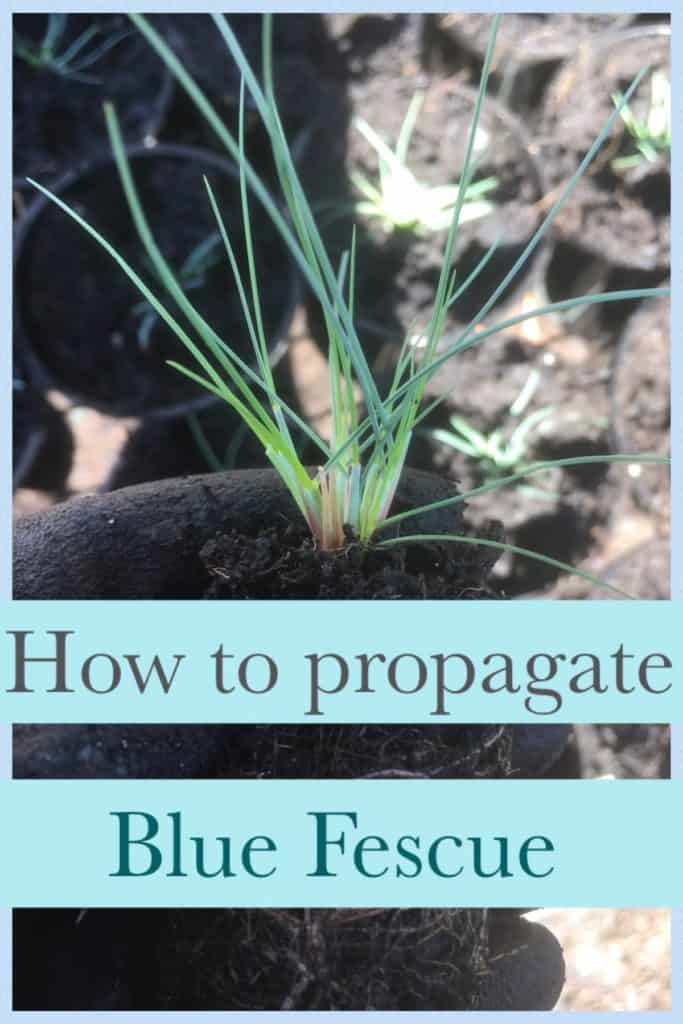
How to propagate Blue fescue grass (Festuca glauca)
This is short guide shows the methods and techniques we use to propagate blue fescue grass in our nursery. We produce hundeds of plants each year by dividing the best performing clumps.
Whilst its easy to grow festuca glauca by seed, each plant will have genetic variations. In nature this is awesome for survival. But in the garden we want the strongest plants with the most vibrant colour.
By dividing the plant we are cloning that plant.
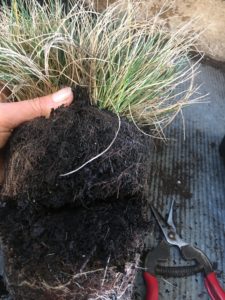
Finding plants to divide
We created our current stock levels from 2 plants bought from a nursery bargain bin for $3.00. Nursery bargain bins are great places to find dividable plants as they are usually overgrown and look tatty, but otherwise good quality healthy plants.
Otherwise dig up an existing clump from a friend or other location. You don’t need to take the whole clump one mature clump can provide hundreds of smaller plants.
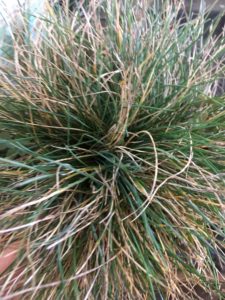

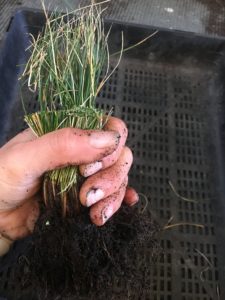
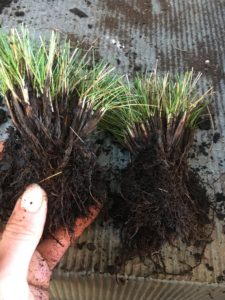
Separating the plants
To make separating the clumps easier we find cutting the existing root system in half handy. This allows us to remove the soil much easier.
To compensate for the removal of a large portion of the existing root system we trim the foliage. We cut the foliage right back to only about 2-3 inches.
Don’t worry blue fescue grows very fast and this greatly reduces plant stress. We achieve practically zero fatalities.
Another tip is to keep a minimum of 3 individual plant stems per clump.
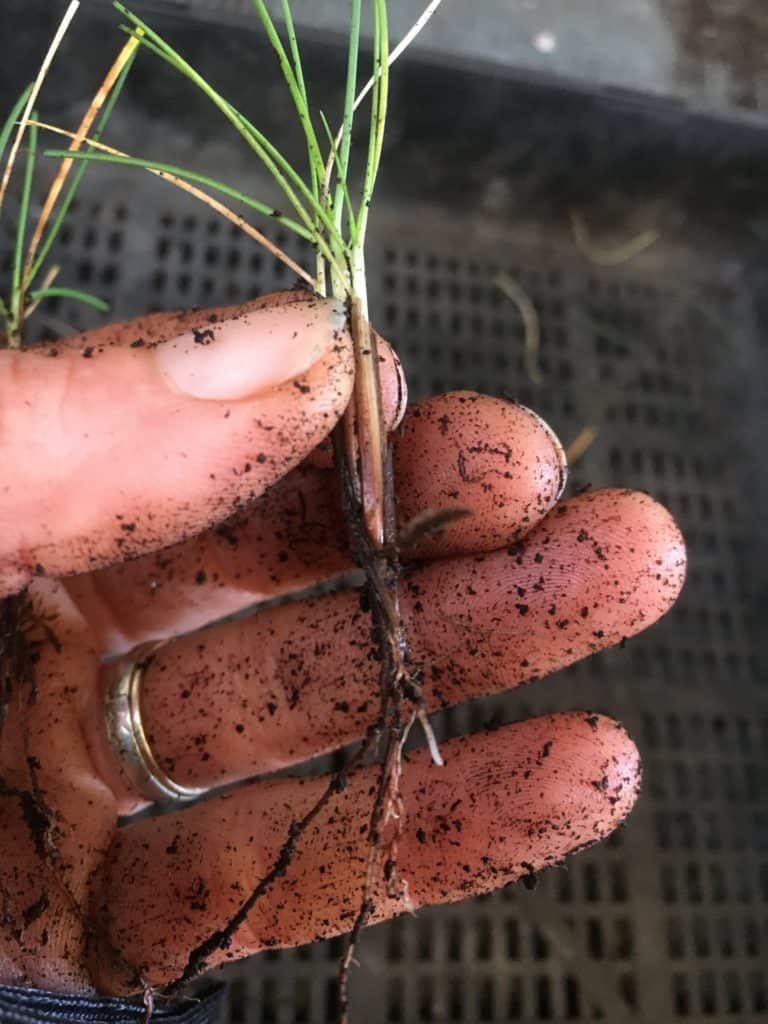
Pot/Store/Wait
Once you have divided the number of plants you require, you can pot them. We pot ours into 2″ (50mm) tubes. By using small tubes we save valuable space and makes it easier to care for our baby plants.
When potting make sure to use a good quality potting or seedling mix. These should already have the trace elements and minerals your plants will need for optimal growth.
Once potted to give the plants the ultimate start we use a seaweed based fertiliser that we use to water them in. This helps encourage a strong root system straight off the bat.
The plants can be stored directly outside provided its not winter. Because the plants have been harvested from outside there is no need to harden them off.
As we mentioned blue fescue is very fast growing and you can expect a decent root system to have developed in 6-12 weeks depending on the time of year.
The plants can be planted into the garden once the root system has reached the sides of the tube and come out the bottom.
Below is a quick video if you prefer a visual tutorial. If you enjoy the content feel free to subscribe. Happy planting.
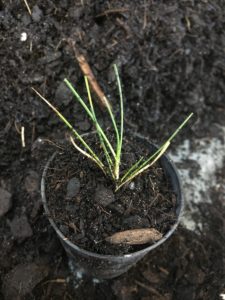
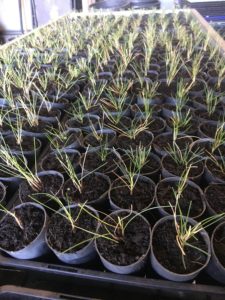
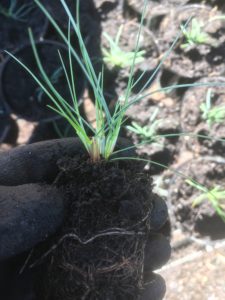
Propagation Kit
We have also put together a resource page that contains links to the products we use or similar. If you want to check that out click the link.
Blue Fescue Propagation Video
Short video on propagating Blue fescue grass(Festuca glauca). We use division as it allows us to propagate only the healthiest and bluest specimens.
CLICK HERE TO SEE OTHER PLANTS WE PROPAGATE
Festuca Glauca- Blue Fescue Grass
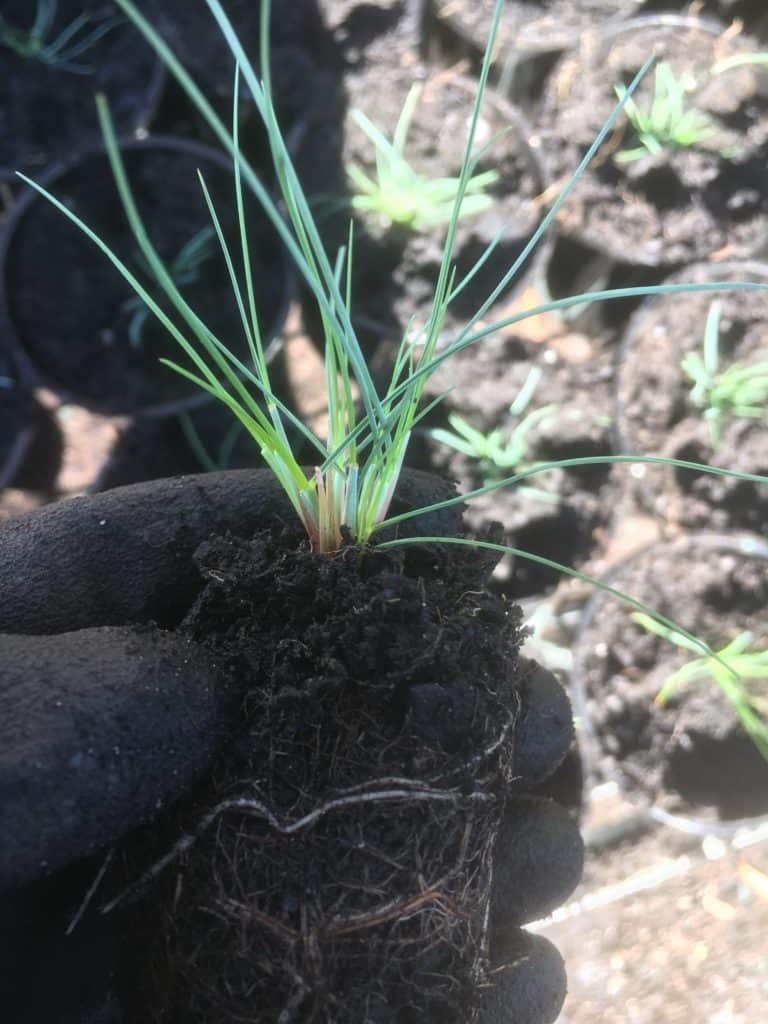
Festuca glauca- Blue fescue care
Festuca glauca- Blue fescue is a clump forming evergreen grass. Grown for its striking blue-green foliage. In late spring into early summer it produces tiny light blue-green flowers, these are followed by grass seed heads.
Blue fescue is a great choice for mass plantings and foliage contrast. A very popular landscape plant.
Tolerates a wide variety of soil types as long as the are not boggy. To remove dead foliage its easiest to cut the whole plant down to almost ground level. It will quickly re-shoot. Tolerates periods of dryness and is frost hardy.
Cultural notes
Botanical name: Festuca Glauca
Common name: Blue Fescue
Family: Poaceae
Native to: Everywhere except Antartica
Flowers: late spring-summer
Position: Full sun/Part shade
Height: 30cm
Width: 30cm
